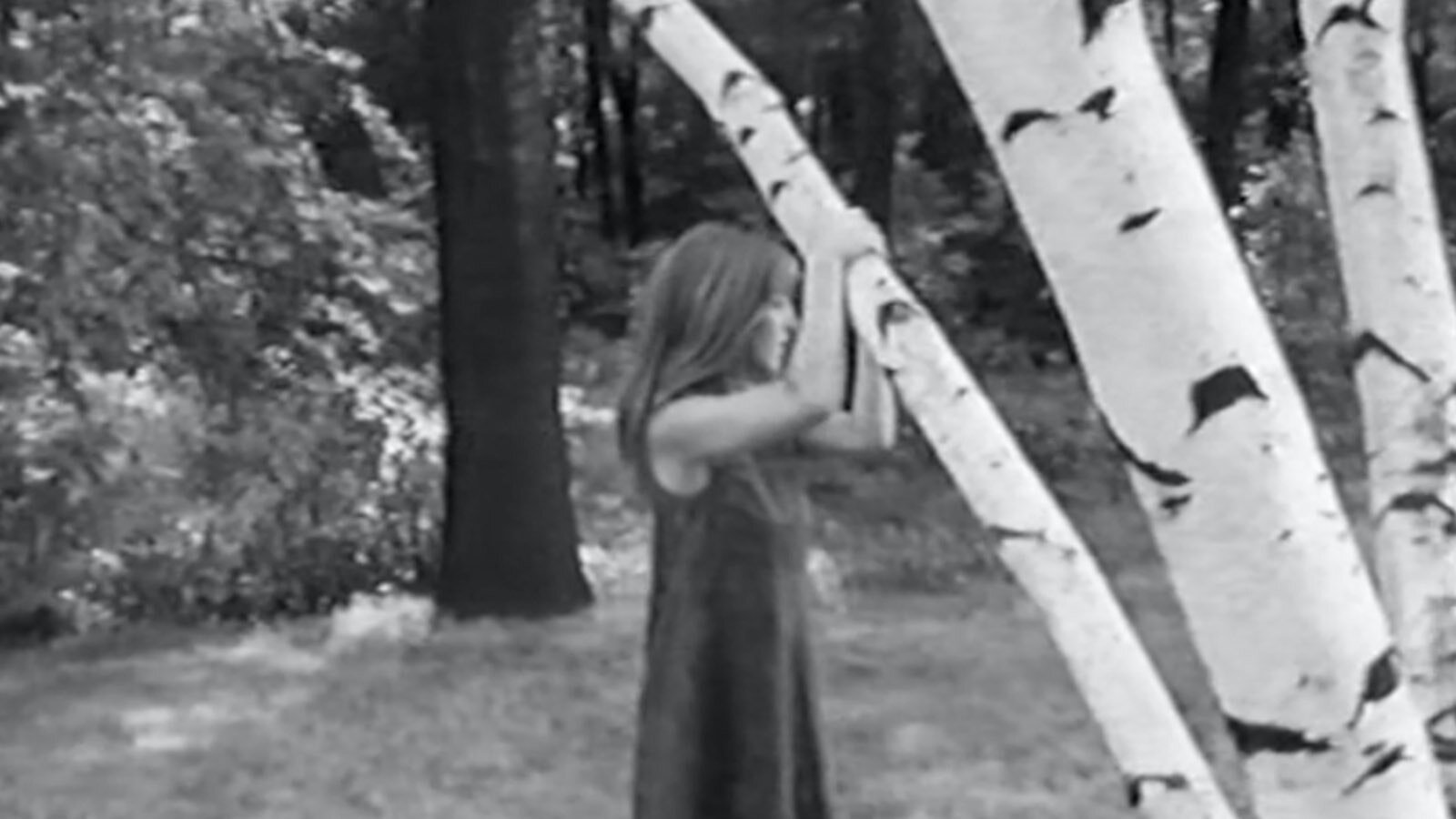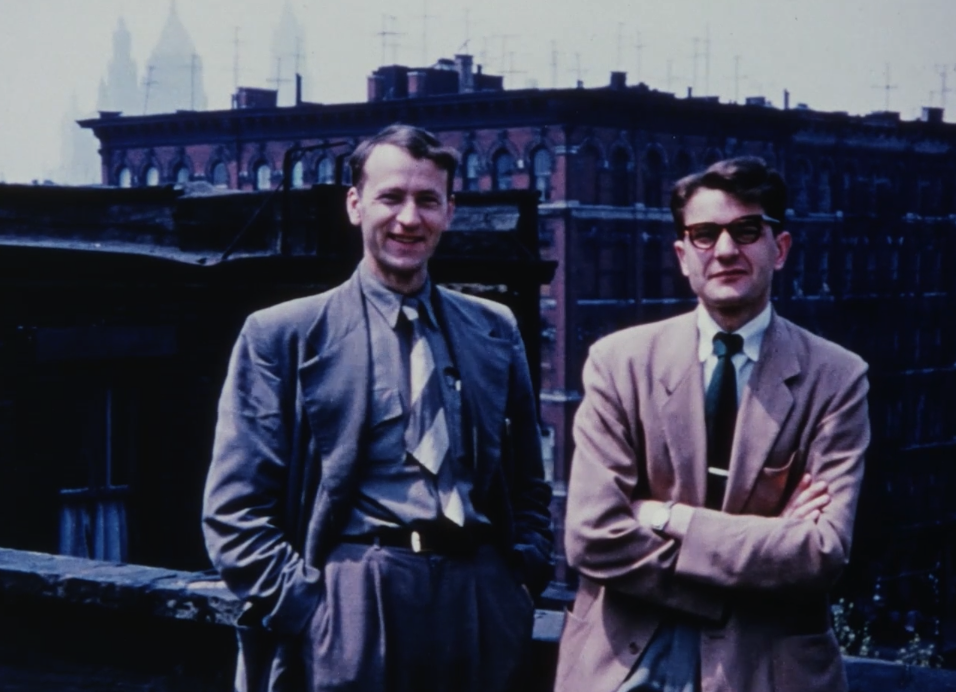RECAP OF GME STREAMLINE'S NEW DSL AND DVD RELEASES FROM THE RE:VOIR COLLECTION FEATURING THE FILMS OF ROBERT KRAMER
/GME Streamline is pleased to announce the availability of a new selection of experimental and independent films from the Re:voir Collection, now available as high quality digital files for streaming on university intranet servers, as well as on DVD and Blu-ray. Our most recent releases from the Re:voir Collection include the first four fiction feature films by Robert Kramer, as well as stylistically diverse films centered around three locales—New York, Brussels and Lithuania: Jackie Raynal’s HOTEL NEW YORK and NEW YORK STORY; the travel diaries 3 JOURNEYS TO LITHUANIA, by Jonas and Adolfas Mekas, and Pola Chapelle (Adolfas’s wife); and a City Symphony by Belgian filmmaker Boris Lehman, MAGNUM BEGYNASIUM BRUXELLENSE (1978). In addition to offering these new releases as Digital Site Licenses, they are available as well in high quality DVD and Blu-ray editions with accompanying booklets in English and French about the filmmakers and their films.
ICE (1969)
Jonas Mekas considered Robert Kramer to be “a filmmaker of the first magnitude.” Over the course of 35 years, he cemented his place as one of modern cinema’s most vital political filmmakers. A former community activist, a member of Students for a Democratic Society (SDS), and founding member of The Newsreel collective, Kramer documented the counterculture and protest movements during the 1960s at home and on the front lines in North Vietnam. It was from the generation of ’60s activism that this bold cinematic and journalistic voice emerged, with films that felt both original and refreshingly homegrown.
IN THE COUNTRY (1966)
Robert Kramer’s first fiction film, IN THE COUNTRY (1966), was made outside all established production systems as he transitioned from daily organizing in Newark (depicted in TROUBLEMAKERS), to filmmaking as a form of critical commentary on the vicissitudes of Movement politics. As a study in solitude and self-obsession, it draws inspiration from the art cinema fare of Antonioni, Rossellini, Bresson, and Dreyer in its deliberately paced depiction of bourgeois disaffection. An unnamed, cynical couple, played by William Devane (in his first lead role) and Catherine Merrill, escape from New York City to a big house in Westchester that they’ve been tasked to sell. He’s an ex-member of the Movement, an organizer, a photographer, and filmmaker (and possible stand-in for Kramer himself), who finds himself gazing into the abyss of his own alienation; she sees through his narcissism and translates his self-aggrandizing obfuscations into critiques of his political impotence. At once about the impasses that tore relationships apart as conventional gender norms were coming undone, and the limitations of mediamaking in the face of intractable political obstacles, IN THE COUNTRY is marked, ultimately, by an isolating and prolonged stasis that Kramer characterized as “[a] trapping, repetitive state of pain.”
THE EDGE (1967)
Kramer’s second fiction feature film, THE EDGE, completed in the spring of 1967, focuses on the intersecting lives of 16 members of a militant urban cell, who experience the suffocating isolation that separates the group from the dominant society, individuals from each other, and each one from his own internal drives and desires. One member of the group, Danial Rainer (played by Jack Rader), expresses an urge to assassinate the President. Despite emphatic protest from his friends and knowledge that his plan will stop neither the war in Vietnam nor catalyze support for the Movement’s revolutionary aspirations, Danial’s resolve forces everyone around him to question his or her commitment to radical action, hastens the organizations disintegration, and results in his demise. THE EDGE was hailed by Cahiers du Cinéma as ushering in a new wave of American personal cinema alongside contemporary work by John Cassavetes, Shirley Clarke, and Andy Warhol.
Kramer’s third feature film in this vein was ICE (1970). Renown programmer, distributor, critic and author Amos Vogel wrote in Film as a Subversive Art that ICE “coolly extrapolates 20 years into the American future to discover urban guerrillas in the streets and glass-and-marble buildings of New York, at war against a fascist regime. A microcosm of personalities, trends, and problems of today’s New Left projected into a very possible future, the film deals with regional offensives, assassinations, terror and counter-terror, dedication, weariness, betrayal…it also hints at the human limitations of its heroes and displays an ideologically interesting ambiguity (if not sadness) toward them; significantly, all talk about ideas and causes has been superceded by discussions of tactics and terror, as if the revolution was merely a matter of efficient technology. The ultimate irony is that the film was financed by the very official, Hollywood-backed American Film Institute.”
GUNS (1980)
A delicate Chinese box of a movie, Robert Kramer’s fourth fiction feature film, GUNS (1980) achieves a power on par with the filmmaker’s classic 1970s explorations of the personal and political. GUNS follows freelance journalist and former radical Tony (Patrick Bauchau) as he blithely picks away at a gun-running plot that implicates the French government, Emirati oil barons, and a shady corporate gangster and his anxious, floundering son. At the same time, the film describes in heartbreaking detail the intersecting lives of Tony; his partner, Katrin (Hermine Karagheuz); her American lover (played by Kramer himself); and Tony’s lover (a mournful Juliet Berto). As the story oscillates between the intrigues of global capitalism and the day-to-day of family life, the ways in which these two worlds inexorably shape each other are made brutally clear.
HOTEL NEW YORK (1984) and NEW YORK STORIES (1980)
According to filmmaker Jackie Raynal, “The late 1970s in New York was similar to the France I knew in the ’60s. There was a lot of music, a lot of artists and filmmakers mixing. We used to go to the Mudd Club or CBGB. That’s where I met Gary Indiana, who helped write the screenplays for my New York movies. The city was bankrupt and that was its hope.” Jackie Raynal’s NEW YORK STORY (1980) is a semi-autobiographical film about Loulou (played by the filmmaker) who searches for a job as an editor (Raynal was considered one of the top editors in France in the 1960s and 1970s, working on films by Eric Rohmer and Philippe Garrel, among others), shares a loft in Soho, and marries an entrepreneur (played by her real-life husband Sid Geffen). Expanding on the concept of this half-hour short, Raynal made the short feature length film HOTEL NEW YORK (1984). Loulou (played by Jackie Raynal), comes to New York after being invited to present one of her works at the Museum of Modern Art. She falls in love with the eccentricities of the city and decides to stay, looking for work as an editor, and finding marital bliss, then boredom, with an entrepreneur named Sid. About this film, Raynal noted that she “wanted to make this film to show how everything is transient [in New York]. Things change all the time and are immediately replaced, much quicker than in Europe. The story stemmed from my own experience and impressions as a foreigner.” Although her observation is of a city quickly changing, Raynal undercuts the rapid pace of the metropolis with a style of long takes, extensive dialogue, and sharply observed characters, resulting in a blend of drama with absurdist comedy.
Adolfas and Jonas Mekas arrived in New York in 1949, leaving Lithuania behind, caught between Nazi and Soviet occupation. Little by little the camera became their means of expression and cinema invaded their lives. The triptych 3 JOURNEYS TO LITHUANIA depicts the experience of the Mekas brothers, together with Adolfas’ wife Pola Chapelle, returning home to their village in Lithuania after a quarter of a century’s absence. This is the odyssey the three films recall in intertwining fashion. The Mekas brothers rediscover their country and family with their changes, while Pola Chapelle’s JOURNEY TO LITHUANIA (1971) is the external gaze embracing this reunion.
Adolfas and Jonas Mekas in REMINISCENSES OF A JOURNEY TO LITHUANIA (1972)
Both of the Mekas works can be considered Diary films par excellence, and are fascinating objects of study, since both filmmakers visualize the same events and participate in them as well, though perceived from different perspectives. In REMINISCENSES OF A JOURNEY TO LITHUANIA (1972), Jonas Mekas structured his film as glimpses of his country of birth; he shows such things as fields, trees, flowers, animals, faces, and home-made beer with a lyrical, fleeting quality, suffused with a melancholic undertone. Adolfas Mekas, on the other hand, in GOING HOME (1971) highlights certain dramatic moments and brings out the comic and tragic in life, with a more upbeat soundtrack. Both films, though, convey a sense that the Mekas brothers returned as visitors; they had outgrown their home and were now tourists – probably the deepest wound inflicted on the uprooted. Neither Lithuanian nor New Yorkers, where is their home now? As Jonas likes to say “My Country is Cinema.”
In STORY OF MY HAIR: ON THE SHORTNESS OF LIFE (2011), Belgian filmmaker Boris Lehman turned the camera on his own self. Through a treatise on his hair, he embarks on a journey in space and time, reflecting on the meaning and fragility of life. In MAGNUM BEGYNASIUM BRUXELLENSE (1978), he directs his camera outward. This film is structured as a classic City Symphony, as it articulates the life in a quarter of Brussels from dawn until sunset. Lehman has described MAGNUM as an “encyclopedia of a district.” It is at once a celebration of a familiar environment and an implicit critique of the physical and social transformations that Brussels has undergone as it has changed from a small town with its traditional inner-city neighborhood life to a faster, more aggressive and more anonymous role as the symbolic crossroads of Europe.
Lehman structures the film as a collage through his juxtaposition of thirty autonomous chapters, organized around a poor neighborhood in Brussels (the Béguinage). He approaches filming this neighborhood from three different angles: the most visible first of all is its exterior aspect, such as the streets, squares, subway construction work, the gutting of buildings. Then there are its institutions: the Béguinage church, the Hospice Pachéco, the barracks of the Petit-Château and the Antonin Artaud Centre for the mentally challenged. Finally, there are its inhabitants, people on the fringes of society, mostly comprised of the mentally ill, the poor and elderly. Lehman explores old age and the passage of time through his images. chapters bound together by a shared theme – an allegory on time and death.
According to Chantal Akerman, “Boris’s work…is solitary and silent. It does not expose itself, it doesn’t show itself in public, it is slow, painstaking, patient craftsman’s work…and it is this patience, working closely with people, that enables him to film in this way, to capture sounds…a city…all kinds of things. He does not provoke or clash with events or emotions; he waits, and sometimes, he is satisfied. He spent two years of his life filmmaking a part of our city, and it is a good thing he did: now, already, nothing will be the same again. Houses have been destroyed, or condemned, some people have been forced to move out others have disappeared, taking with them a part of this present that is now already a part of our past, songs, jokes, a certain way of talking, a language, a rhythm of life. This film, in a way, is a piece of our memory.”
Click here for a complete list of GME Streamline DSL titles currently available.










